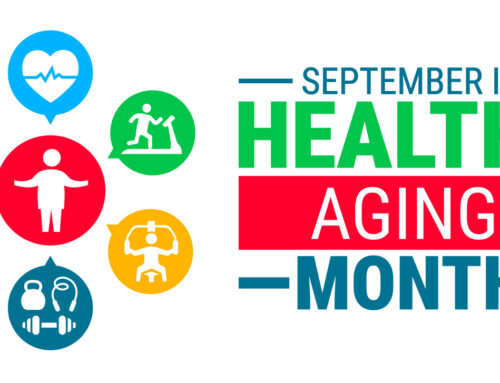Vision loss is a significant health issue among the elderly. According to the American Academy of Family Physicians, one in three individuals suffers from some form of vision-reducing eye disease by the age of 65. The most common causes of vision loss among seniors are glaucoma, cataracts, age-related macular degeneration, and diabetic retinopathy. Seniors and their family members must be aware of these conditions, especially since approximately 70 million Americans will be over the age of 65 by the year 2023.
FirstLantic wants to make sure you have all the information necessary so that you can spot the signs and get help if necessary. Here’s what you need to know:
How Aging Affects Your Vision
Most major eye diseases and conditions are age-related. Research shows that 65 percent of those with visual impairment and 82 percent of those who are blind are over the age of 50. It’s not uncommon for middle-aged adults to notice slight changes to their vision which then progresses over time. For example, between the ages of 41 and 60, changes often occur concerning the eyes’ ability to focus. The eye itself is a complex organ made of two clear tissues. As you age, these tissues degenerate. When the lens is affected, cataracts are often the cause, whereas if the retina is affected, the aging process is often accompanied by macular degeneration.
Common Eye Conditions to Be Aware of As You Age
Dry Eye
Around 70 percent of Americans over the age of 60 live with dysfunction of their meibomian glands. These glands produce the protective, oily components of tears. This leads to dry eye, resulting in potential discomfort, pain, and vision impairment. An age-related disease called Fuch’s dystrophy is also a potential cause among the elderly. Women are also twice as likely to be affected by dry eye compared to men.
Cataracts
Causing clouding in the eye’s lens, cataracts can lead to hazy or blurred vision. By age 80, over half of all Americans either have cataracts or have had surgery to address this condition. Progression is typically slow, which is why it’s important to discuss your symptoms with an eye care professional as soon as possible. They will watch for changes over time to see if surgery would be a beneficial option.
Age-Related Macular Degeneration
As many as 11 million people in the United States live with some form of age-related macular degeneration, which is the leading cause of vision loss in those 60 years of age and older. By 2050, the number of people living with this condition is expected to double to nearly 22 million. Because it affects the sharp, central vision which is needed to see clearly, it makes it challenging to read or drive.
Diabetic Retinopathy
If you have diabetes, it’s important to remain mindful of diabetic retinopathy. This condition develops slowly and may not show any early warning signs. If you or your loved one are living with diabetes, seek a dilated eye exam at least once annually. Issues with your vision can also be a sign of overall worsening health when you have diabetes and may be a result of improper blood sugar control.
Glaucoma
This condition develops when too much fluid pressure builds inside the eye. If left untreated, vision loss and even blindness can occur. Again, you may not notice any early symptoms, which is why eye exams are so important. Over three million Americans live with glaucoma, 2.7 of whom are 40 and older.
How to Prevent and Treat Eye Conditions
Eyecare should be on your radar at any age, but particularly as you age. Yes, the aging process is inevitable. However, there are steps you can take to help prevent and later manage symptoms of eye conditions.
As discussed, annual eye exams are critical for catching early warning signs — especially when no noticeable physical symptoms are present. It’s also important to see your physician regularly to check for diseases that can cause eyesight problems, such as diabetes. With so many conditions and variables to consider, it’s important to work with your eye care professional to develop an individualized treatment plan. Start with the factors that are within your control, such as lifestyle changes, and then follow your treatment plan as directed. Some common options include drops, dietary supplements, medications, and surgery. Plenty of low-vision aids are also available, including lenses that filter light, magnifying glasses, and telescopic glasses. Electronic devices, such as tablets and Ebook readers, can be adjusted concerning reading material. For example, fonts can be made darker and larger, which is helpful for select impairments.
FirstLantic Healthcare Is Here for You and Your Family
Serving the people of South Florida since 2000, FirstLantic Healthcare has built a culture of care, dignity, and compassion. Whether you or your loved one are in need of home care services or are interested in assisted living, FirstLantic offers superior home healthcare. Contact us for more info today!
 AVAILABLE 24 HOURS A DAY/7 DAYS A WEEK
AVAILABLE 24 HOURS A DAY/7 DAYS A WEEK Careers
Careers







